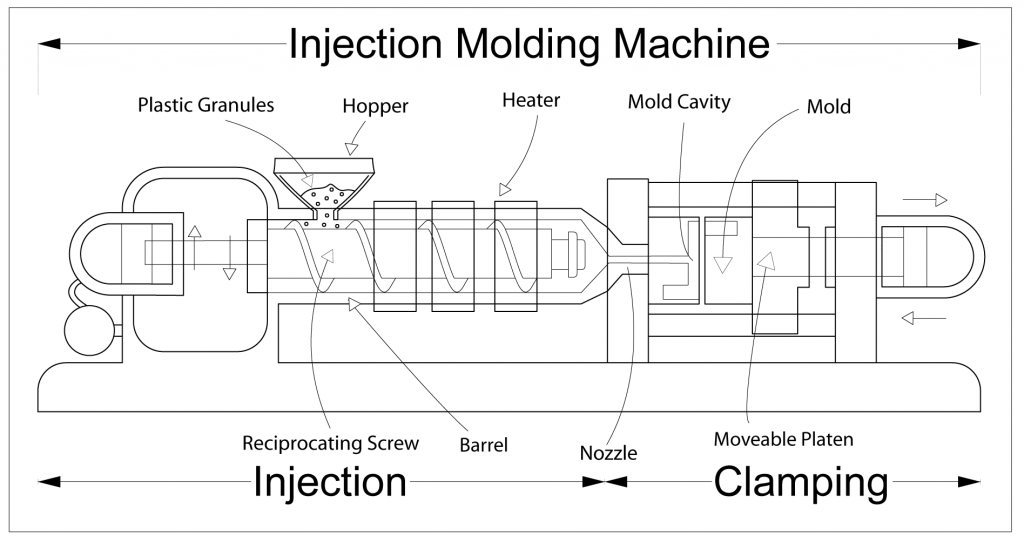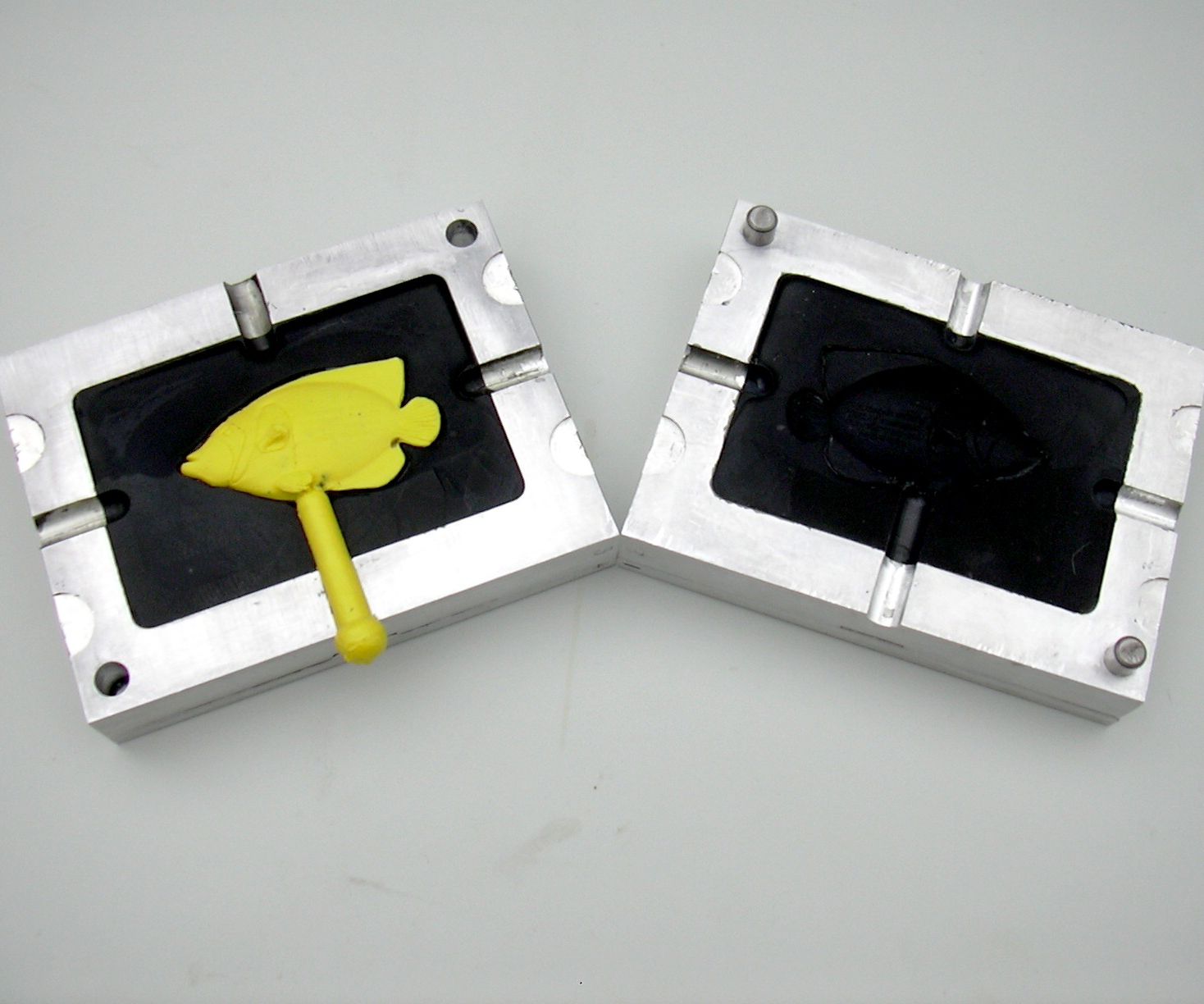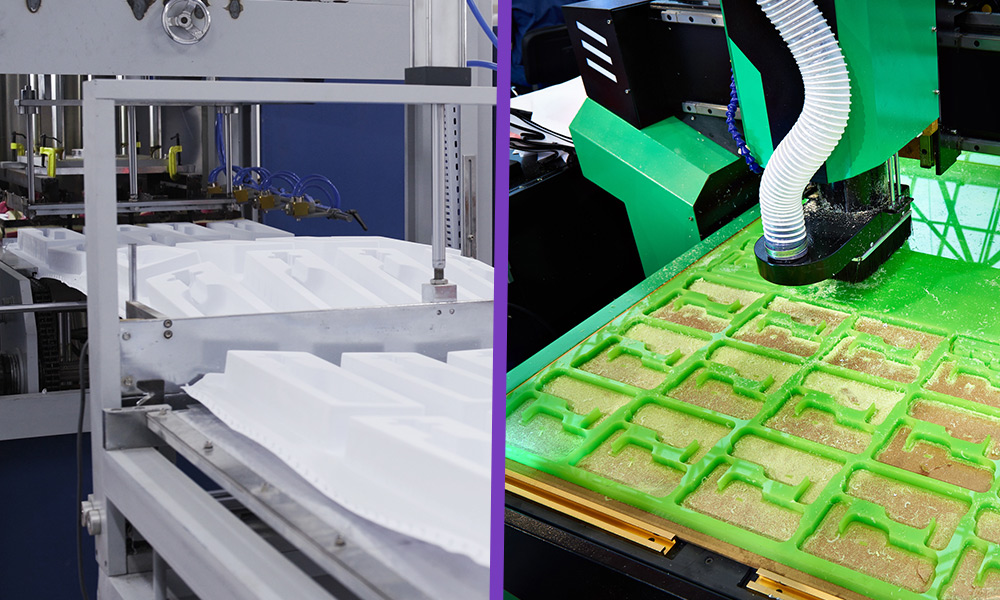Why Plastic Injection Molding Is Vital for Accuracy and Longevity
Why Plastic Injection Molding Is Vital for Accuracy and Longevity
Blog Article
Comprehending the Essentials of Plastic Injection Molding Procedures
Plastic shot molding offers as a foundation of modern manufacturing, giving a systematic technique to creating intricate components with accuracy. Checking out these necessary components might expose exactly how even minor adjustments can lead to substantial enhancements in production outcomes, elevating concerns about the possibility for development in this established procedure.
What Is Plastic Injection Molding?
Plastic shot molding is a commonly made use of manufacturing procedure that transforms thermosetting and polycarbonate materials into precise and complicated forms. This method is preferred for its ability to create high quantities of identical components with extraordinary precision, making it an important technique in various sectors, including auto, customer goods, and medical tools.
The process includes thawing the picked plastic material and injecting it into a mold and mildew under high stress. The mold, created to the requirements of the desired part, enables the liquified plastic to form as it solidifies and cools. When the product has actually hardened, the mold is opened, and the completed part is ejected.
Plastic injection molding provides a number of benefits, consisting of reduced waste, consistency in manufacturing, and the ability to include intricate styles that may be testing with various other making approaches. In addition, it sustains a wide variety of materials, each providing unique residential or commercial properties that can be tailored for details applications. As sectors proceed to introduce, plastic shot molding stays at the leading edge, making it possible for the growth of innovative items that satisfy developing consumer demands.
The Shot Molding Refine
The injection molding process is a sophisticated technique that involves numerous vital phases to create high-grade plastic elements. Plastic pellets are fed into a heated barrel where they are thawed right into a viscous fluid. This molten plastic is after that injected under high pressure right into a precision-engineered mold, which shapes the product into the desired kind.
When the mold is filled, the plastic is permitted to strengthen and cool, taking the form of the mold and mildew tooth cavity. Cooling time is critical, as it impacts the cycle time and the final properties of the shaped part. After enough air conditioning, the mold and mildew opens, and the completed element is expelled making use of ejector pins.

Products Made Use Of in Shot Molding
Different materials can be used in the injection molding process, each offering distinct homes that provide to certain applications. One of the most frequently utilized materials include thermoplastics, thermosetting plastics, and elastomers.

Thermosetting plastics, like epoxy and phenolic visit homepage resins, undertake a chemical change throughout the curing procedure, leading to an inflexible, stringent framework. These materials are suitable for applications requiring high warmth resistance and structural honesty, commonly used in vehicle parts and electric insulators.
Elastomers, consisting of silicone and rubber-based materials, provide versatility and resilience. Their one-of-a-kind homes make them ideal for applications that demand flexibility, such as seals and gaskets.
Furthermore, specialized materials pop over to this site like bio-based plastics and compounds are acquiring grip for their ecological advantages and improved performance attributes, broadening the range of shot molding applications in various industries. Recognizing the buildings of these materials is essential for choosing the proper kind for details tasks.
Benefits of Shot Molding
Shot molding attracts attention as a very reliable production process that provides various advantages for producing complex parts with accuracy. Among one of the most considerable benefits is the ability to develop detailed styles that would be difficult or difficult to achieve with other approaches (Plastic Injection Molding). The procedure permits tight resistances and in-depth features, making certain top notch elements
Additionally, shot molding is known for its quick manufacturing capacities, making it a suitable choice for high-volume manufacturing. Once the mold and mildew is produced, components can be created quickly, lowering lead times and raising general productivity. This effectiveness not only reduces production expenses however likewise offers an one-upmanship on the market.
The versatility of products used in injection molding better improves its allure. A broad array of thermoplastics and thermosetting polymers can be utilized, permitting producers to pick materials that finest fulfill their particular needs, including warmth, flexibility, and stamina resistance.
In addition, the process reduces waste, as excess product can often be recycled and reused. This sustainability facet adds to a reduced environmental effect, making shot molding a liable production selection. Overall, the advantages of injection molding make it a preferred technique for numerous markets.
Variables Affecting Product Quality
While various elements can influence product high quality in injection molding, comprehending these aspects is vital for achieving optimum outcomes. Key elements consist of product option, refining specifications, and mold and mildew style.
Material choice plays an important function, as different polymers exhibit distinct buildings that influence flowability, toughness, and thermal security. Insufficient material choice can lead to defects such as warping or insufficient dental filling.
Processing parameters, consisting of cycle, pressure, and temperature time, must be meticulously controlled. Variants in these settings can result in incongruities partially dimensions and surface coating. Exceedingly high temperature levels may create deterioration of the polymer, while inadequate stress can result in short shots.
Mold and mildew design is just as crucial, as it identifies the circulation of the molten plastic and the cooling process. Improperly designed mold and mildews might bring about irregular air conditioning rates, resulting in dimensional errors and recurring anxieties.

Conclusion
In final thought, plastic injection molding serves as a critical production procedure that enables the efficient production of high-grade elements. Proficiency of the injection molding process, including the understanding of materials and the impact of numerous variables on item high quality, is crucial for attaining ideal results. The advantages of this approach, such as cost-effectiveness and layout versatility, additional underscore its significance throughout several industries, strengthening its standing as a favored selection for high-volume manufacturing.
Plastic injection molding offers as a keystone of contemporary manufacturing, giving a methodical look what i found approach to generating complicated components with accuracy.Plastic injection molding supplies a number of advantages, consisting of decreased waste, uniformity in production, and the capability to include elaborate designs that might be challenging with various other manufacturing techniques (Plastic Injection Molding). As industries proceed to innovate, plastic shot molding remains at the leading edge, making it possible for the development of innovative products that satisfy evolving customer demands
The injection molding procedure is a sophisticated strategy that involves a number of key phases to produce top notch plastic elements.In final thought, plastic injection molding serves as a critical manufacturing procedure that enables the reliable manufacturing of premium parts.
Report this page